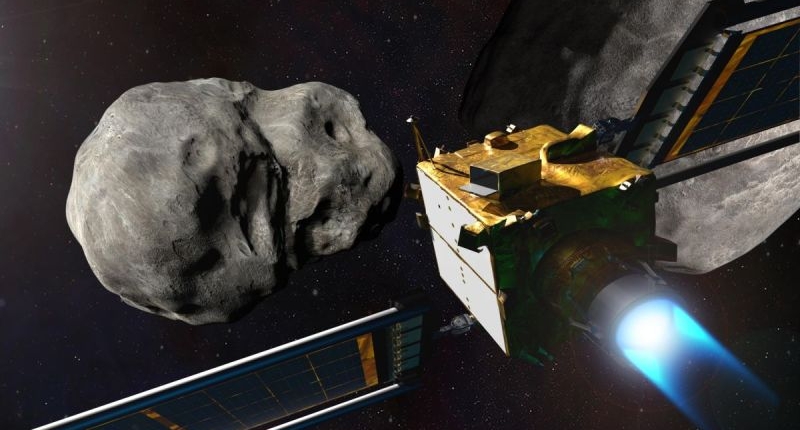Asteroid exploration is a top priority in space exploration, with upcoming research projects such as NASA’s Lucy spacecraft and the European Space Agency’s missions. Infrared light and radio telescopes are used to measure the size of asteroids accurately. Scientists use different methods to shift an asteroid’s orbit to prevent it from colliding with Earth, including gravity traction, nuclear explosions, and kinetic impactors. Evidence of past asteroid impacts on Earth may have been misinterpreted, making it difficult to plan for future impacts. NASA’s chief scientist James Garvin believes we need to understand these past impacts to prepare for the next catastrophic event.
Potentially Hazardous Asteroids (PHAs)
Potentially dangerous asteroids are a subset of near-Earth objects (NEOs) that could pose a threat to Earth should they collide with our planet. These are asteroids that are larger than 140 meters (460 feet) in diameter and can come as close as 7.48 million kilometers (4.65 million miles) to Earth, about 20 times the average distance between the Earth and the Moon. If one of these asteroids were to enter Earth’s atmosphere without burning up, it could cause widespread damage and countless injuries, especially if it landed in a large city or densely populated area.
According to NASA, there are currently around 31,000 NEOs that have been determined, of which approximately 2,300 are considered potentially hazardous. Although many of these objects originate in the main asteroid belt between Mars and Jupiter, their orbits have shifted as the solar system has evolved over millions of years. However, about half of the known NEOs are more than 460 feet in diameter, but they don’t orbit close enough to Earth to pose a threat.
Monitoring Potentially Hazardous Asteroids
NASA, along with other space agencies, uses various methods to monitor PHAs, including ground-based telescopes, space-based telescopes, and radar systems. They also use infrared technology to more accurately determine the size of an asteroid. NASA has calculated the trajectories of all known PHAs and has found that none of them will threaten Earth for at least the next 100 years.
Conclusion
Potentially hazardous asteroids are a subset of near-Earth objects that could pose a threat to our planet. Although there are currently around 2,300 PHAs that have been identified, NASA has calculated their trajectories and has determined that none of them will threaten Earth for at least the next 100 years. NASA and other space agencies continue to monitor PHAs to ensure that we are prepared for any potential threats that may arise in the future.
Detecting Asteroids and Comets
Scientists and amateur astronomers around the world scan the skies for asteroids and comets using ground-based telescopes like the Catalina Sky Survey in Arizona and the Infrared Telescope Facility on Mauna Kea in Hawaii. The NEOWISE satellite also monitors the sky from space. When an asteroid or comet is spotted, it is reported to the International Astronomical Union’s Minor Planet Center, which compiles all observations of small bodies in the solar system. From there, scientists can take additional measurements to determine the exact orbit of the asteroid and whether it could pose a threat to Earth.
To accurately measure the size of an asteroid, scientists use infrared light or heat, which is a better indicator of its mass than the amount of light it reflects. Radio telescopes are also used to bounce radio waves off asteroids, accurately measuring the time it takes for the waves to travel to and from the asteroid to determine its size and shape.
Preparing for Potentially Hazardous Asteroids (PHAs)
In movies, astronauts make the ultimate sacrifice to destroy asteroids hurtling towards Earth. But in real life, scientists believe non-human methods are best to protect Earth from an asteroid impact. One such method is shifting an asteroid’s orbit by a tiny amount to cause it to miss Earth entirely.
NASA scientists have been researching ways to shift an asteroid’s orbit. One method is gravity traction, in which a spacecraft orbits an asteroid and nudges its orbit using the effects of gravity. Another method would be to detonate a nuclear explosive near (not inside) the asteroid to throw it off course. However, the most viable option using today’s technology is a kinetic impactor, which intentionally collides with the asteroid to deflect it. In September 2022, NASA’s Double-Asteroid Redirection Test (DART) mission successfully collided with a small moon of an asteroid at 23,400 km/h and changed the orbit of the space rock around its host asteroid by 32 minutes, proving the kinetic impactor method can work.
NASA and other space agencies continue to monitor PHAs to ensure that we are prepared for any potential threats that may arise in the future. With a spate of missions around Mars this year, some lesser-explored parts of the solar system will see new eyes. Three countries visited the Red Planet in 2021 and sent orbiters, landers, rovers, and even a helicopter. The United Arab Emirates successfully launched its first interplanetary spacecraft called Hope in December 2021.
The Age of Asteroid Exploration
Asteroid exploration is becoming one of humanity’s top space exploration priorities with upcoming research projects such as NASA’s Lucy spacecraft embarking on a 12-year journey to Jupiter’s Trojan asteroids, and the European Space Agency’s forthcoming missions. However, evidence of past asteroid impacts on Earth may have been misinterpreted, making it difficult to plan for future impacts. NASA’s Goddard Space Flight Center chief scientist James Garvin believes we need to better understand these past impacts to prepare for the next cataclysmic event.
Don’t miss interesting posts on Famousbio










